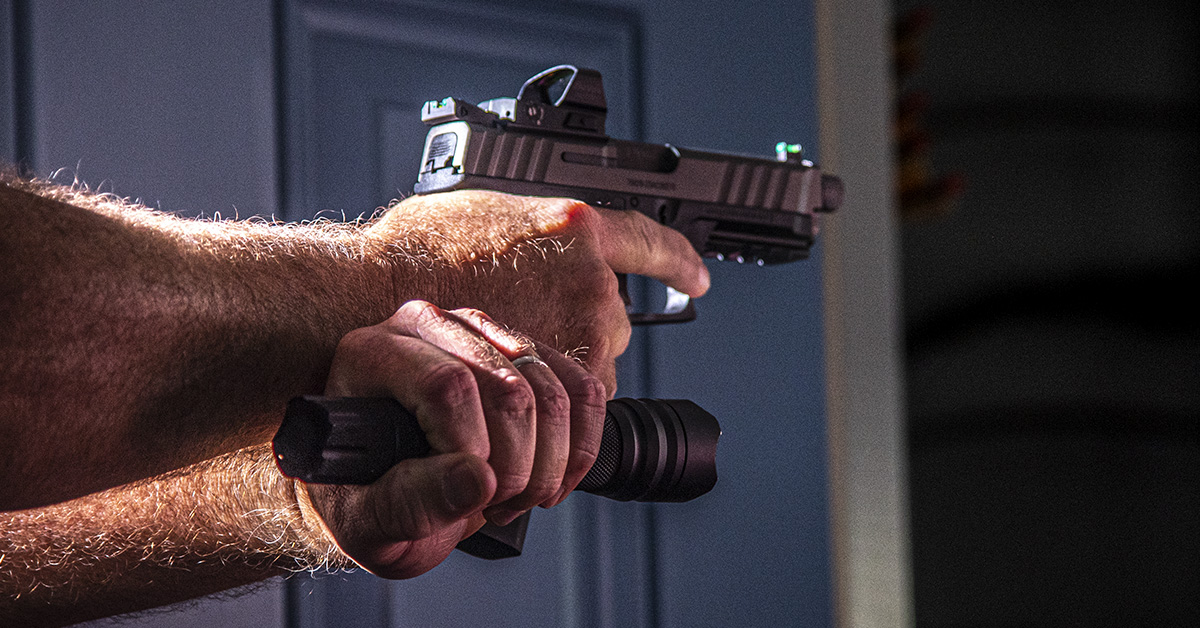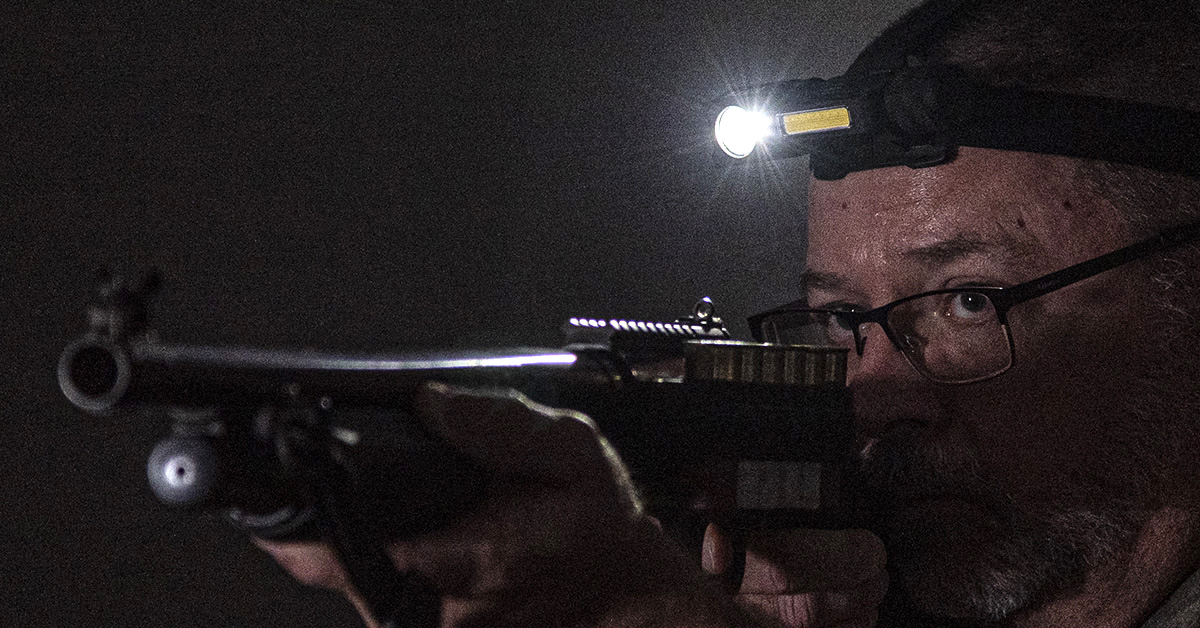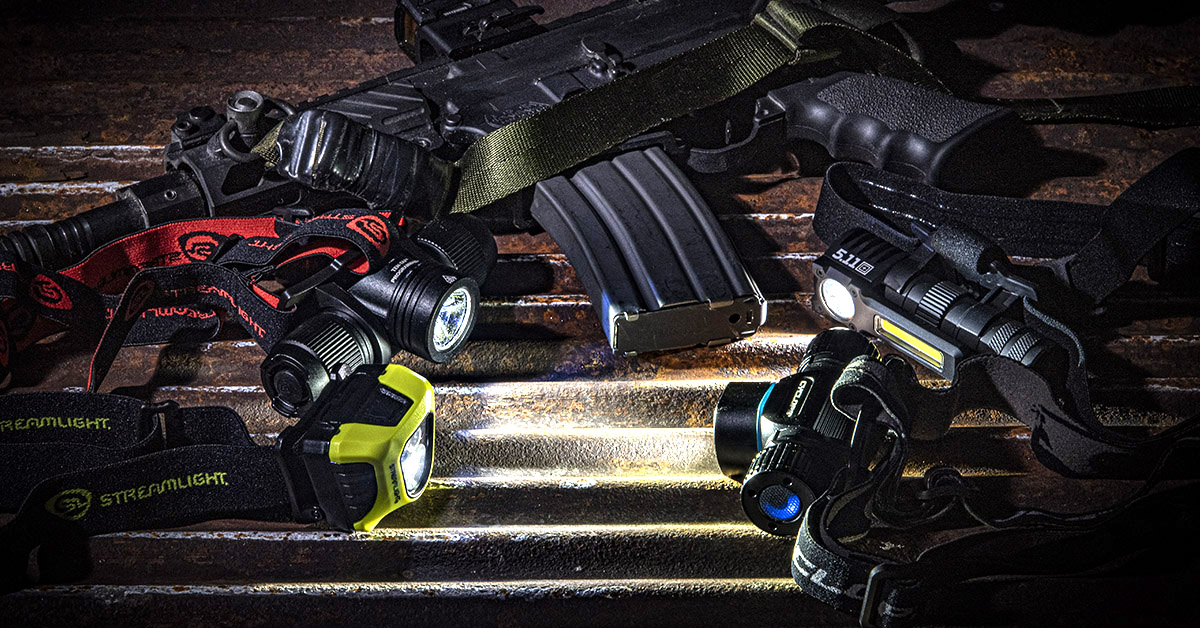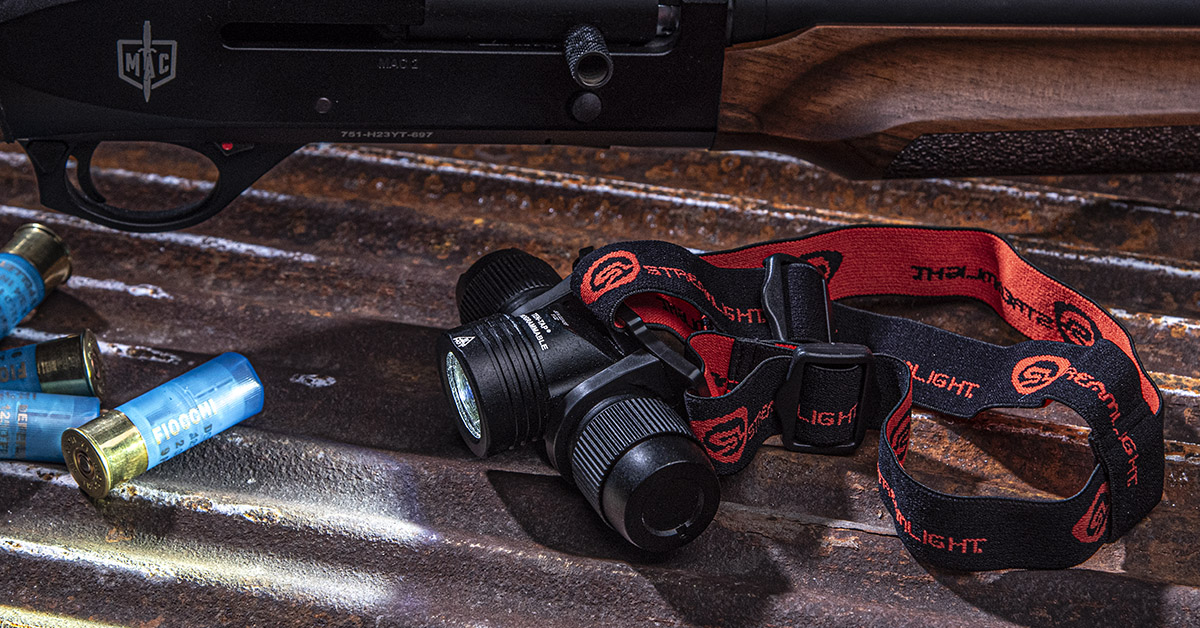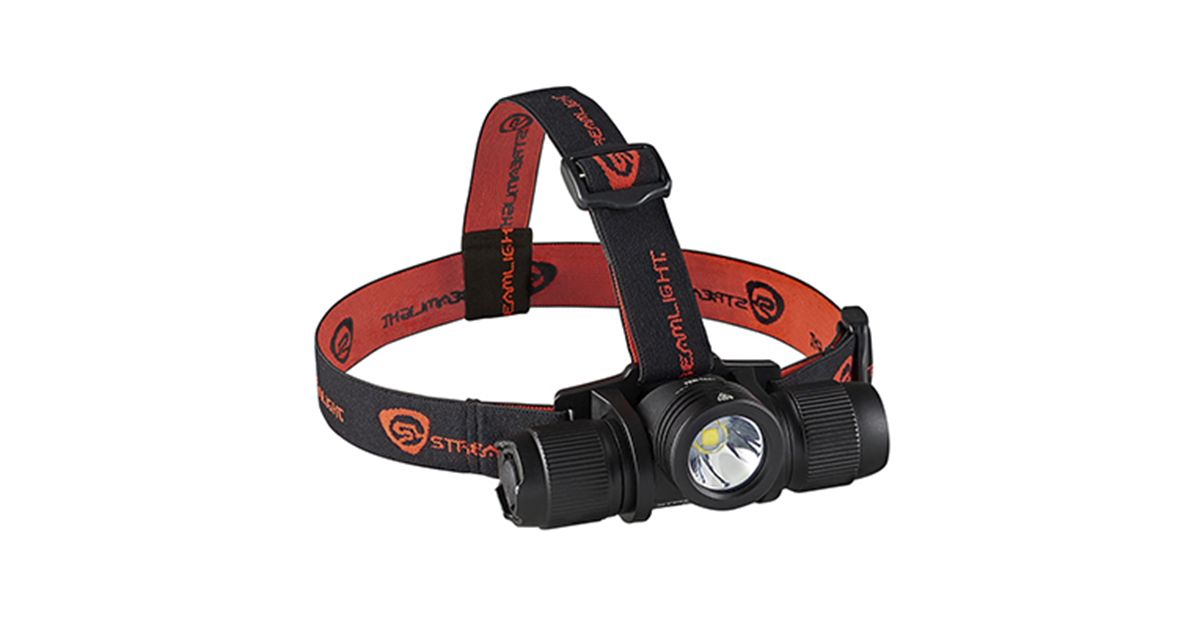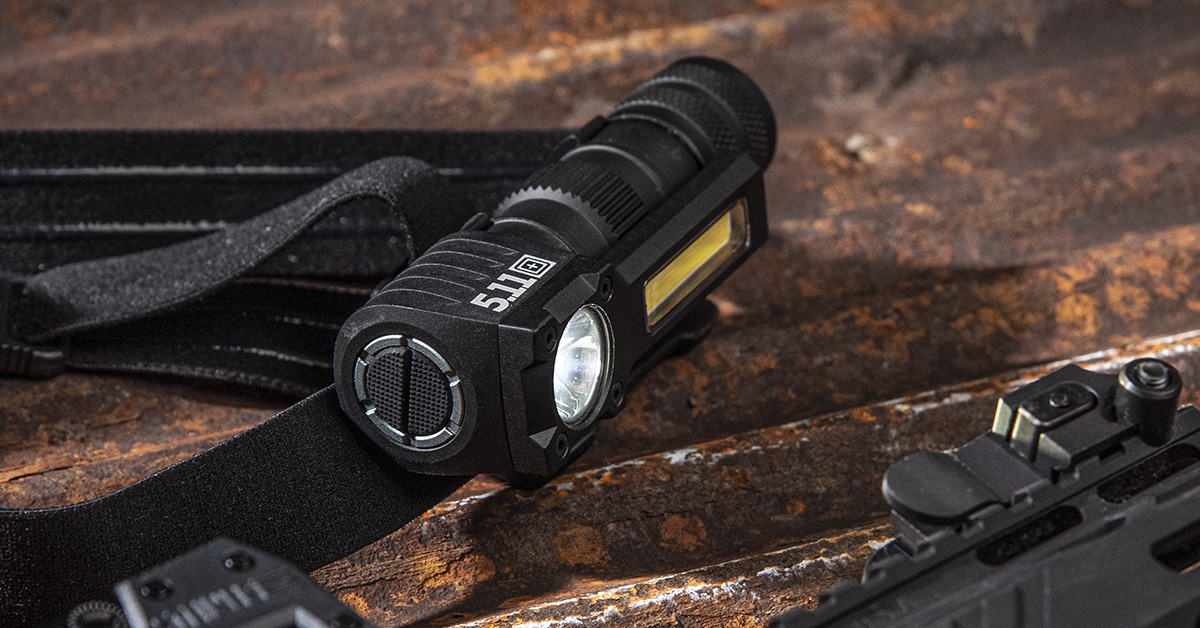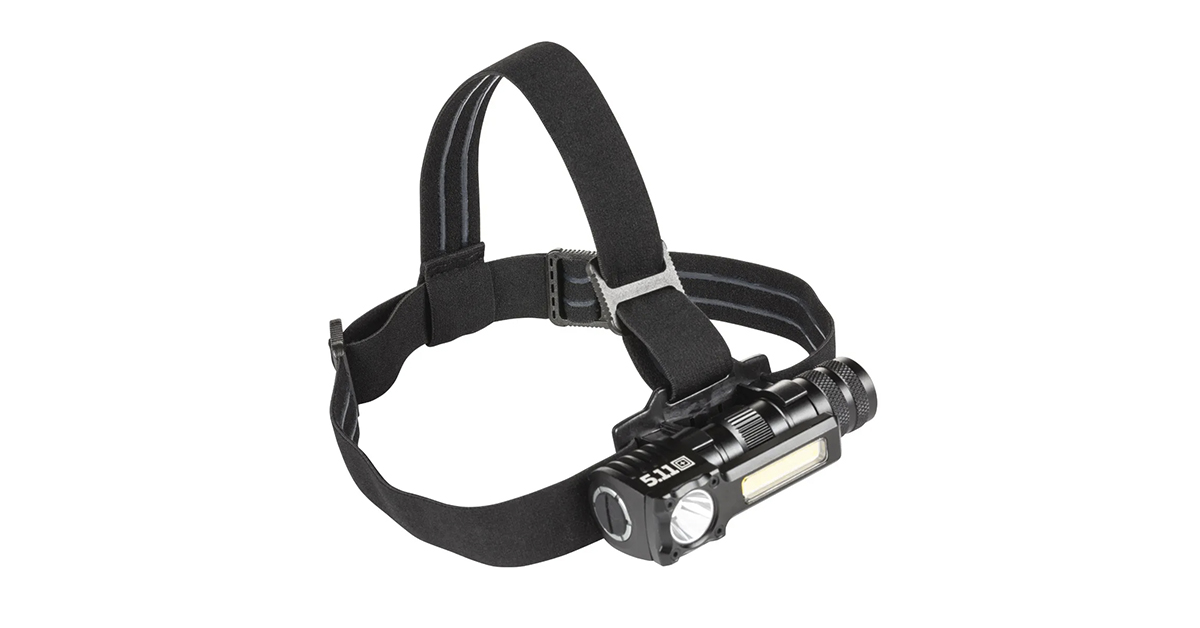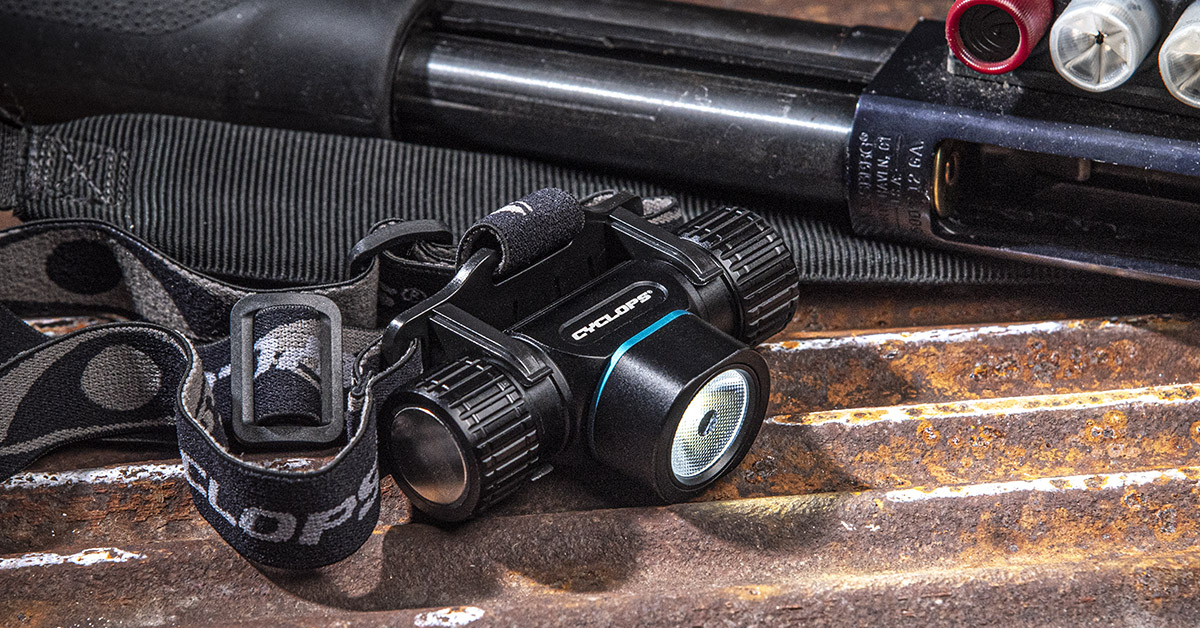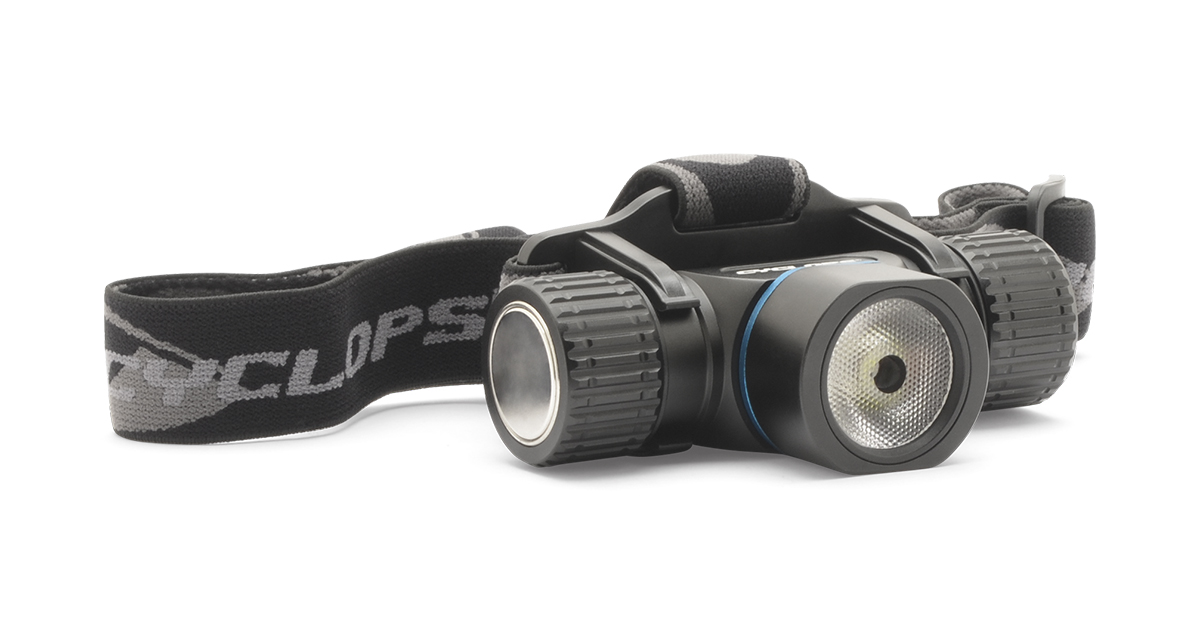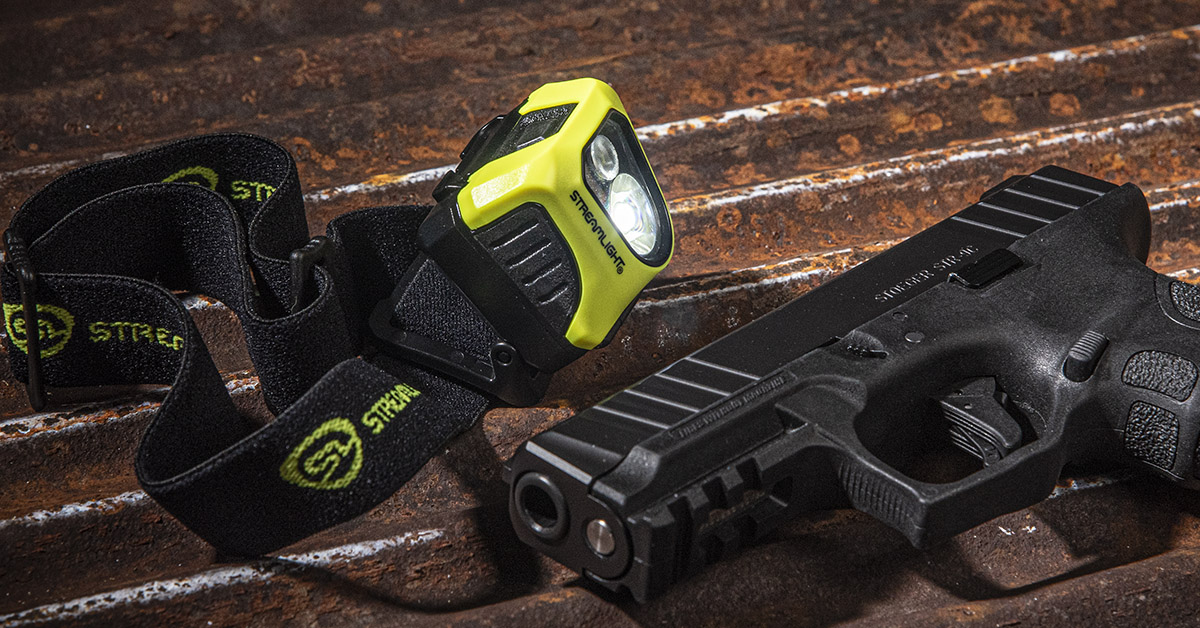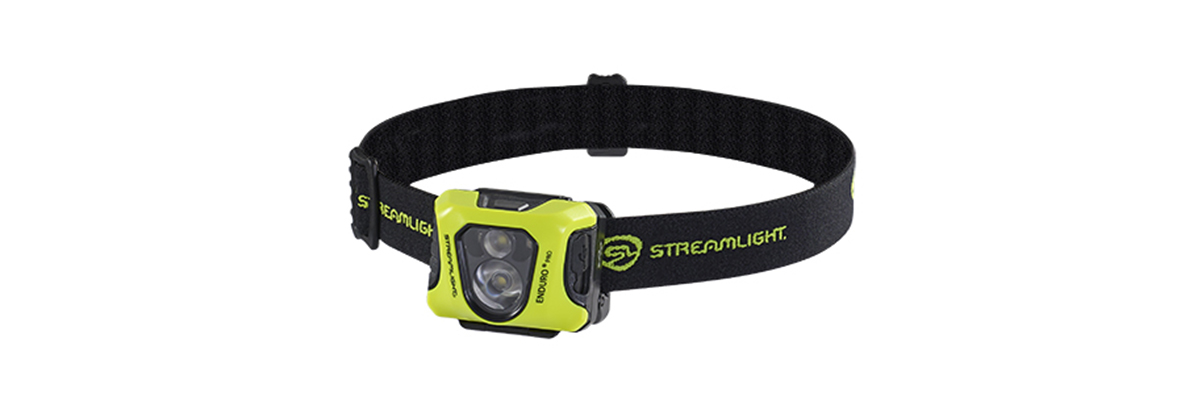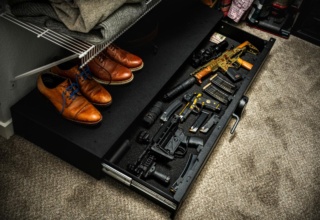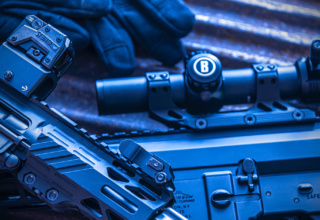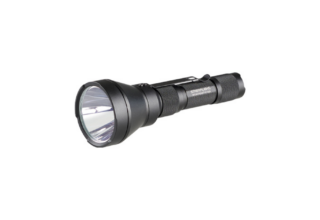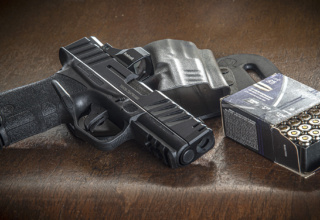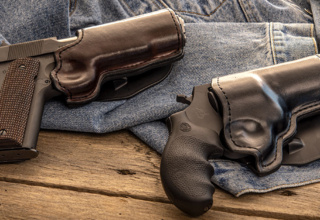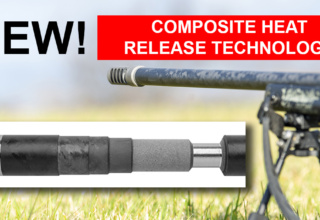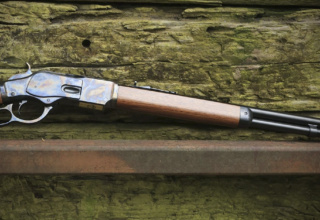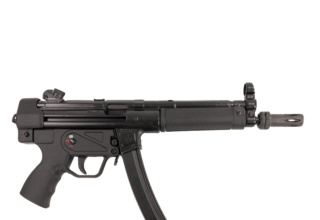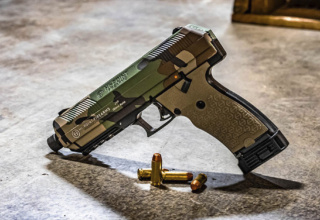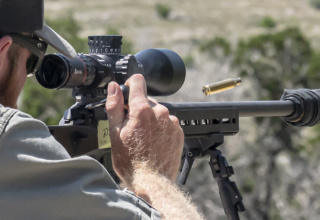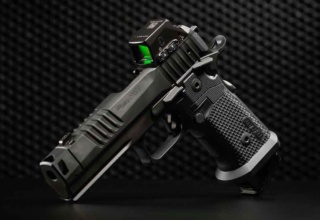Home defense encounters are typically nighttime affairs, meaning you need a light to see by and to identify your target. Weapon-mounted and handheld tactical lights have long served this purpose, but are they the best or the only choice?
by Rob Reaser
There is little argument that, all other factors set aside, a weapon-mounted light is the best choice for engaging a threat in the dark. Whether affixed to a shotgun, carbine, or a pistol, a forward-illuminating light secured to your defensive firearm allows you to keep both hands on the weapon (as it should be) while searching for the threat.
We must consider, though, the several downsides to the weapon-mounted light that become especially evident when we are discussing the home environment. The worst offender is that a weapon-mounted light is going to necessarily cause the muzzle to cover whatever the light is hitting. That breaks Col. Jeff Cooper’s Rule #2 of gun safety: Never cover anything with the muzzle that you aren’t willing to destroy.
There are so many instances I can imagine of how a weapon-mounted light — again, in a home defense environment — could become…let’s say…problematic. For example, your pistol light is turned on as you move through the house to check on that noise you heard and another family member steps out in front of you, down the hallway or around a corner. You’re now pointing your gun at them. Better make sure that in your high-alert, high-adrenaline state you don’t have an autonomic reaction and pull the trigger as your animal mind screams, “Threat!” before your rational mind can consider the tactical situation and stay your hand.
Ditto if there is a commotion outside your home. Perhaps it is your neighbor looking around because he also has heard a noise, or maybe some hapless drunk or meth-fueled fool has stumbled onto your front porch while trying to get home.
The possibilities are many, and a weapon-mounted light can potentially sour them all if you are not in complete control of your heightened emotional state.
The most common alternative to the weapon-mounted light is a handheld light, or the straight-tube flashlight. As far as safety goes, a handheld light is certainly the best option. You can quickly and precisely deliver illumination where you need it, all while keeping your weapon in a safe, low-ready or high-ready position.
Such a light is well-managed if your defensive arm is a handgun. Holding the light in your weak/support hand with the reflector toward the outside (pinky side) of the hand allows you to place your strong/firing hand overtop the support hand in wrist-over-wrist fashion. This is not the most stable of shooting forms, of course, but it works and works well for close-quarter encounters — especially if you spend time practicing this technique on a night range.
The caveat? This method sucks big time if your home defense arm is a carbine or a shotgun. You may get the first shot off without a hitch, but this “floating hold” approach will wreak havoc on the follow-up shot. And if your shotgun is a pump-action, well, forget about it.
So, what is there to do if you don’t want to violate a fundamental firearm safety rule by using a weapon-mounted light and you much prefer having both hands free to operate your defensive weapon?
You may want to consider the other lighting option no one seems to talk about — the headlamp.
Although a headlamp may not be the best solution for everyone, I have tested this option with various firearm platforms and have found few compromises in their use.
I keep a headlamp on the shelf of my bed’s headboard. It’s easy to slip on as I get out of bed and reach for my rifle or shotgun, but that comes from much practice. Because I have used the headlamp for so long, I can grab the housing with one hand — and know its orientation (up or down)— while the other hand guides the elastic strap around my noggin’. I’m armed, illuminated, and out the bedroom door in a flash.
As mentioned, I have used headlamps with all manner of firearm and sight system configurations as far as my home defense weapons go. That means pistols with iron sights and PMOs, and defensive shotguns (18.5-inch barrel length) with front bead sights as well as ghost ring sights. I find the sight picture quick to acquire with a headlamp; the target downrange is sufficiently lit for positive identification and point-of-aim, and the headlamp easily illuminates the front and rear iron sights for fast sight alignment.
Regarding open sight pistols and pistols with pistol-mounted optics (PMOs), or red dots…same deal. I find no difficulty acquiring the sight picture with open sights or with a PMO. Before I began testing headlamps with PMOs, I thought that maybe having a headlamp lighting up the back of the optic glass might complicate the red dot visibility, but it didn’t have any impact at all to my eyes.
Where I do find the headlamp option somewhat of a handicapped is when using ARs with open sights or LVPOs (low power variable optics). The problem I have with iron sights on an AR has to do with the direction of the light when the weapon is properly mounted in my shoulder and my cheek firmly planted on the stock. The light tends to shine down and to the right, making for poor illumination of the target. The same holds true when running an LPVO, although it is less problematic. In fact, the LVPO works OK with the headlamp so long as it features an illuminated reticle. With an unilluminated reticle, the sight picture just isn’t satisfactory to me. Fit the rifle with a red dot, though, and I’m good to go.
Obviously, the compatibility of a headlamp and your preferred home defense weapon is going to come down to what works best for you. Should you choose to go this route, it is important that you find a combination that provides a positively reliable, clear, and quick sight picture where there is no trouble fully illuminating the target or aligning the sights. This can only come through testing to see what works.
After that, it is essential to practice shooting with your chosen weapon and headlamp combination. This can be difficult since most public ranges close after sunset, so you’ll need to find a live-fire alternative. You can also do some after-dark dry-fire practice if you have a safe environment to work in. In other words, backyard suburbia is not an option! Dry-fire practice in your basement or garage with the lights off.
What to Look for in a Headlamp
There are many variables to consider when choosing a headlamp for home defense purposes. It basically comes down to ergonomics, sufficient illumination for the environment, and ease of operation in a stressful situation.
Because I live in a rural environment with a larger-than-average homestead footprint and outside buildings to consider, I demand a headlamp that offers good illumination out to 50-60 yards at a minimum. That means a high-output light in the 1,000- to 2,000-lumen range. Such a light is somewhat hefty in terms of size and weight, which necessitates a harness-style headband that is supported by a band that goes both around the head and across the top.
Of course, if your defensive environment is limited to the inside of your house, that is likely way more light than you need. In that case, a smaller, lighter headlamp with a sharp beam should prove sufficient. You must be the judge.
Another big point to consider is operational ease and the user interface.
One of my favorite lights I use when hunting or on backpacking trips is an older-style Petzl. The aggravating part is that the on/off button is too small and must be decisively pressed to operate. In other words, it is not quickly turned on, so in a high-stress encounter, it presents a potential fumble factor that just won’t work.
The light you choose should be simple to operate, easy to engage, and provide you with confidence in its operation under duress.
Here are a few headlamps to consider for home defense use…
Streamlight ProTac 2.0 Headlamp
The Streamlight ProTac 2.0 is a top candidate for anyone who wants a light that can shine way out there with authority. Its 6000-series machined aluminum housing with Type II MILSPEC anodized finish and IP64 rating for dust/water- and impact-resistance means it’s built like a tank. A full-support harness and foam forehead pad keeps the 10.48-oz. light securely positioned.
What I really like about this light, aside from the high output, is that it has a single on/off switch that is easy to manipulate. This switch also has a momentary-on function as part of its TEN-TAP programming, which allows for three user-selectable programs in high, medium, and low output.
The ProTac 2.0 is powered by a single SL-B50 rechargeable battery and comes with a limited lifetime warranty.
Key Performance Specifications
- Max Lumen Output: 2,000
- High Runtime: 2.25 hours
- Low Runtime: 25 hours
- Beam Distance: 241 meters
- Rechargeable Battery: yes
5.11 Response HL XR1
If you prefer a lamp that is relatively light yet is sturdy built and diverse in its lighting options, the Response HL XR1 from 5.11 Tactical is a good choice. Weighing nearly half that of the Streamlight (and with half the lumen output), the Response HL XR1 works well for inside environments and for investigating the backyard after dark.
This lamp features two lights. The spotlight has four illumination levels (high, medium, low, and glow) that are selected via the forward-most switch. There is also a flood bar that provides a glow as well as a red COB (chip-on-board) light for discrete illumination.
Both switches are located on the right side of the lamp. Once I became accustomed to which switch engaged which light, operation became simple.
The Response HL XR1 is constructed of a machined aluminum body capable of 1-meter impact resistance and is IP54 water resistant.
A cool feature of this headlamp is that it clips onto the headband assembly, so it is easily removeable. The light bar includes a spring clip, allowing you to insert the light in a breast pocket for hands-free illumination.
Another feature I really appreciate is that the light can be swapped for left- or right-hand operation. I prefer the left-hand orientation because it allows me to adjust the light while keeping my strong hand/firing hand on my weapon (being right-handed).
Key Performance Specifications
- Max Lumen Output: 1,021
- High Runtime (spot): 1 hour, 35 minutes
- Low Runtime (spot): 6 hours, 22 minutes
- Flood Runtime: 6 hours
- Beam Distance: 135 meters
- Rechargeable Battery: yes
Cyclops Poseidon
The Cyclops Poseidon is another interesting headlamp that will well-serve the home defender. This lamp is only slight heavier than the Response HL XR1 at 7.76 oz. and runs on a rechargeable 217000 battery.
As with the Streamlight ProTac 2.0, the Poseidon is controlled by a single side-mounted switch that accesses four different power settings: 100%, 40%, 15%, and 3%. At any of the lower illumination settings, a simple long-press of the switch will ramp the illumination up to full power, so there is no need run through all the settings to achieve high output. Also, double-pressing the switch at any illumination level immediately sends the light into strobe mode. If you want to disorient an intruder, this mode will do it (I’ve tried it on myself and can attest to its effectiveness).
This light’s housing will also separate from the head harness, and it comes with a strong magnet on one end, allowing you to place it where you want it for hands-free work.
Key Performance Specifications
- Max Lumen Output: 2,000
- Runtime: 5 hours @ 40%
- Beam Distance: 200 meters
- Rechargeable Battery: yes
Streamlight Enduro Pro
If light and simple is your preference for in-home use, the Streamlight Enduro Pro USB is an easy choice. Another single-button lamp, the Enduro Pro USB is simple to operate and comfortable to wear at only 3.6 oz.
For a small lamp, it is quite diverse. Long-pressing the on/off switch allows you to choose between spot LED and flood LED modes. Within each mode are three illumination settings: high, medium, and low. For home defense, you just want to make sure the unit is set for spot mode so that when you turn it on you are ready to see down the dark corridors.
The Enduro Pro USB is powered by a lithium polymer cell battery. Charging comes via an included USB cord and there is a charge status indicator on the faceplate so you’ll know when the lamp is fully loaded.
A polycarbonate thermoplastic housing with an elastomer overmold coupled with polycarbonate lenses make this one tough lamp for both defense and general-purpose duties.
Key Performance Specifications
- Max Lumen Output: 200
- High Runtime: 6.25 hours
- Low Runtime: 48 hours
- Beam Distance: 91 meters
- Rechargeable Battery: yes

